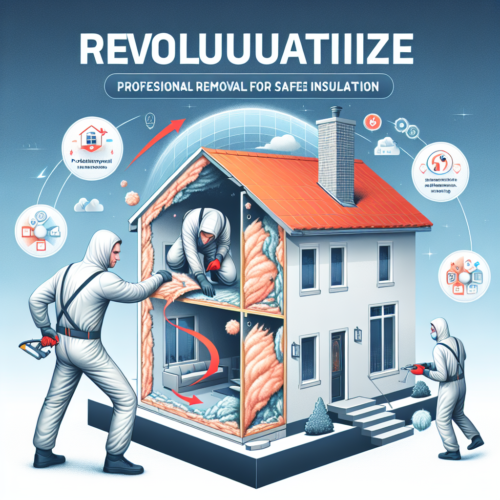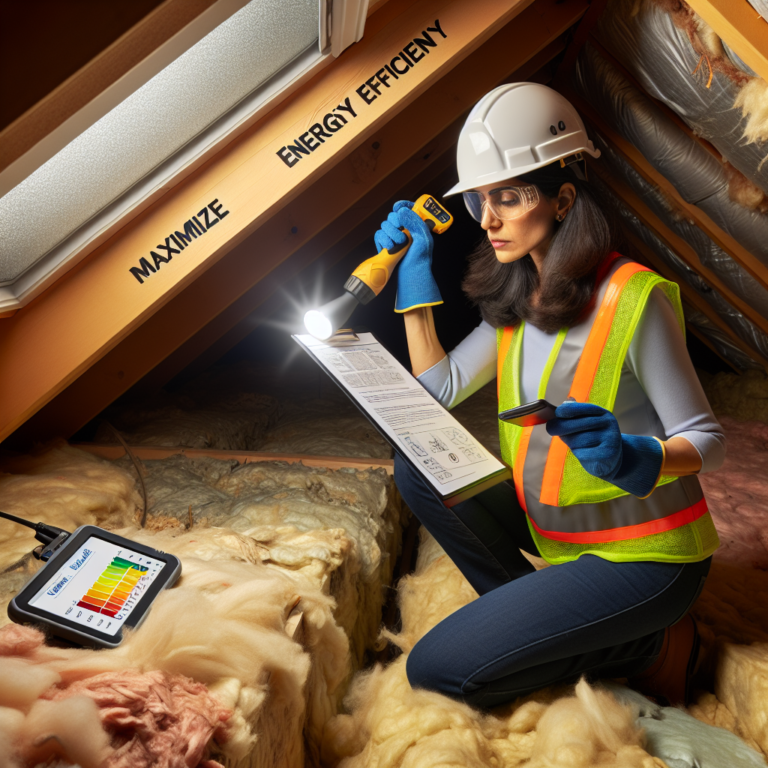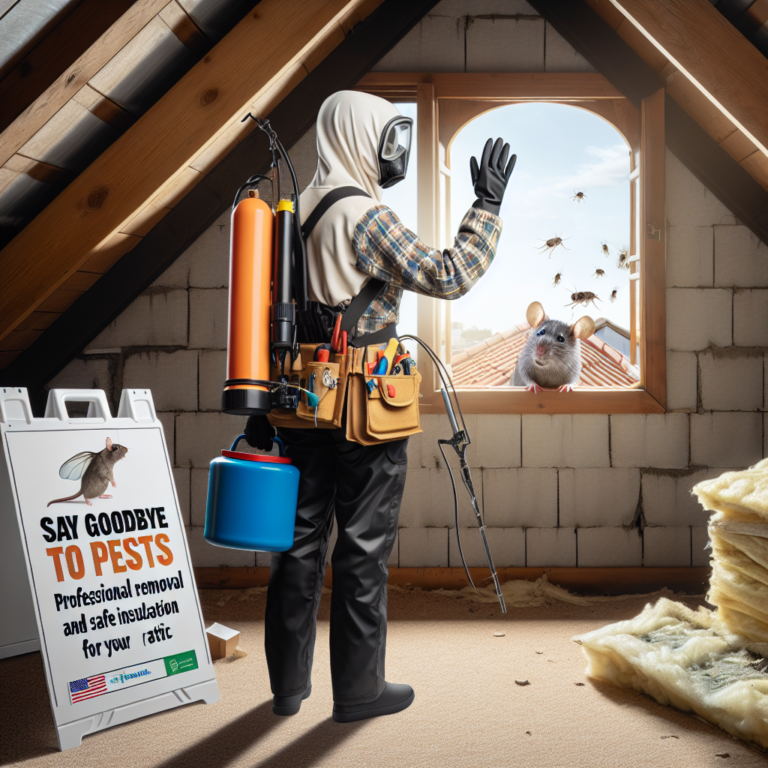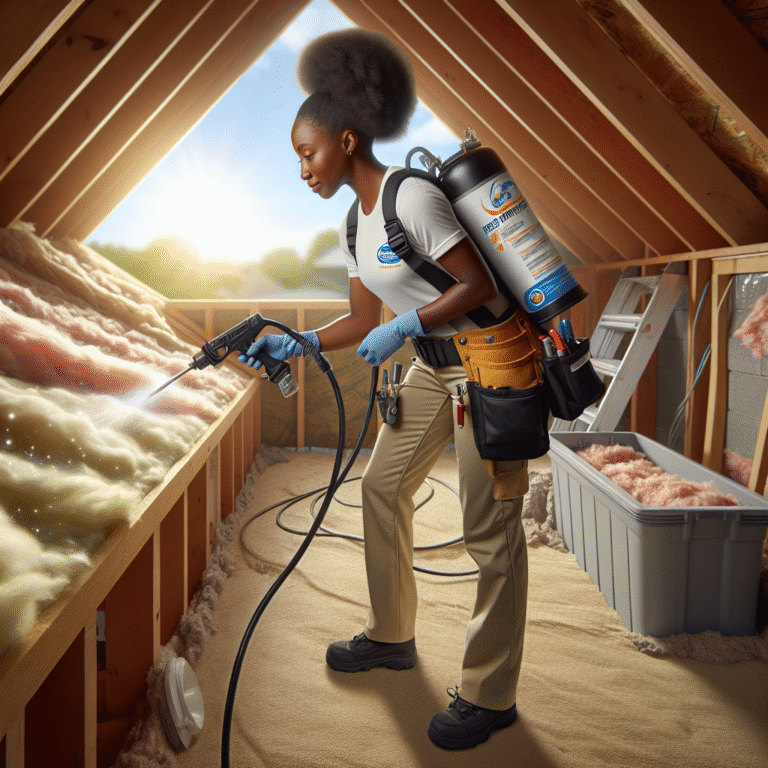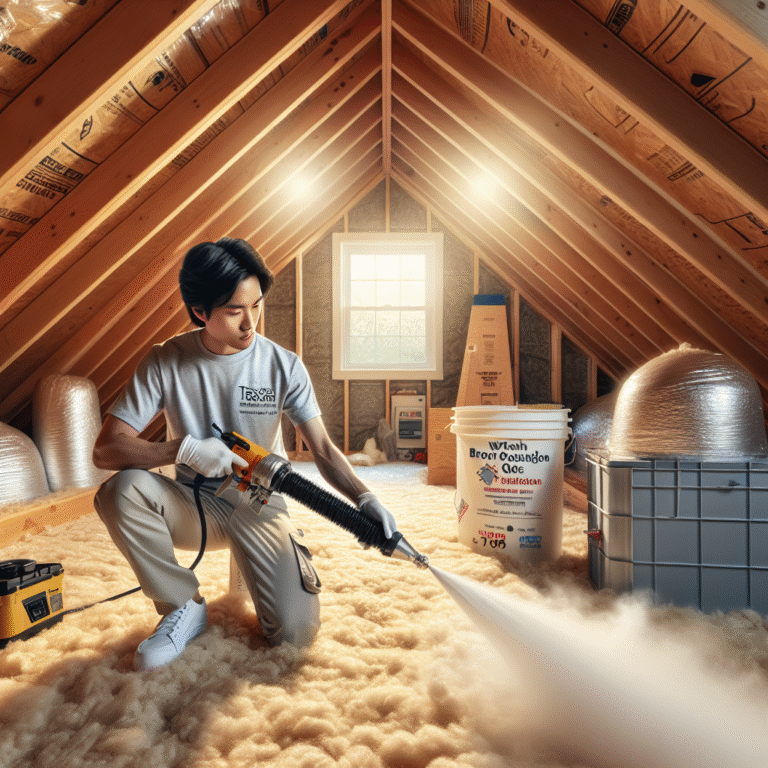-
Table of Contents
“Stay warm and save money – make sure your attic insulation is up to par!”
“Make sure your attic insulation is working properly to save energy and money. Visit texasinsulationsolution.com to learn how to check and improve your attic insulation today.”
Introduction
Attic insulation is an important aspect of maintaining a comfortable and energy-efficient home. It helps to regulate the temperature and reduce energy costs. However, over time, insulation can become less effective due to wear and tear or improper installation. This can result in higher energy bills and discomfort in your home. Therefore, it is important to regularly check if your attic insulation is working properly. In this guide, we will discuss the steps you can take to ensure that your attic insulation is doing its job effectively.
Signs of Inadequate Attic Insulation
Attic insulation is an essential component of any home’s energy efficiency. It helps to regulate the temperature inside the house, keeping it warm in the winter and cool in the summer. However, over time, insulation can become less effective, leading to higher energy bills and discomfort in the home. In this article, we will discuss the signs of inadequate attic insulation and how to check if your attic insulation is working properly.
One of the most obvious signs of inadequate attic insulation is fluctuating temperatures in your home. If you notice that your home is significantly colder in the winter and hotter in the summer, it could be a sign that your attic insulation is not doing its job. Insulation works by creating a barrier between the inside of your home and the outside elements. When this barrier is compromised, it can no longer effectively regulate the temperature inside your home.
Another sign of inadequate attic insulation is high energy bills. As mentioned earlier, insulation helps to keep your home at a comfortable temperature without relying too heavily on heating or cooling systems. When your insulation is not working properly, your HVAC system has to work harder to maintain the desired temperature, resulting in higher energy bills. If you notice a sudden increase in your energy bills, it may be time to check your attic insulation.
In addition to temperature fluctuations and high energy bills, inadequate attic insulation can also lead to moisture problems. Insulation not only helps to regulate temperature but also acts as a barrier against moisture. When insulation is not working properly, it can allow moisture to seep into your home, leading to mold and mildew growth. If you notice any musty odors or visible signs of mold in your attic, it could be a sign of inadequate insulation.
Another way to check if your attic insulation is working properly is to conduct a visual inspection. Start by going up to your attic and taking a look at the insulation. If you notice any gaps or thin areas, it could be a sign that your insulation needs to be replaced. Additionally, if you can see the floor joists through the insulation, it is not thick enough to provide adequate insulation.
You can also perform a simple touch test to check the effectiveness of your attic insulation. On a cold day, place your hand on the ceiling in your home. If it feels cold to the touch, it could be a sign that your insulation is not working properly. The same goes for a hot day; if the ceiling feels warm, it could be a sign of inadequate insulation.
If you are unsure about the state of your attic insulation, it is always best to consult a professional. An insulation contractor can conduct a thorough inspection of your attic and provide recommendations for any necessary repairs or replacements. They can also help you determine the best type of insulation for your home and climate.
In conclusion, it is essential to regularly check your attic insulation for signs of inadequacy. Fluctuating temperatures, high energy bills, moisture problems, and a visual or touch inspection are all ways to determine if your attic insulation is working properly. If you notice any of these signs, it is crucial to address the issue promptly to ensure your home remains comfortable and energy-efficient. Remember, proper attic insulation is key to a comfortable and cost-effective home.
DIY Methods for Checking Attic Insulation
Insulation is an essential component of any home, as it helps to regulate the temperature and keep energy costs down. However, over time, insulation can become less effective due to wear and tear, settling, or even damage from pests. This is why it is important to regularly check your attic insulation to ensure it is working properly. In this article, we will discuss some DIY methods for checking your attic insulation.
The first step in checking your attic insulation is to visually inspect it. This can be done by accessing your attic and looking for any obvious signs of damage or wear. Look for areas where the insulation may be compressed or missing, as well as any holes or gaps. These can all indicate that your insulation is not working as it should.
Next, you can perform a touch test. This involves feeling the insulation with your hands to determine if it is still fluffy and has not settled. If the insulation feels flat or compacted, it may not be providing adequate insulation. Additionally, if you notice any areas that are significantly colder or warmer than others, this could also be a sign of inadequate insulation.
Another DIY method for checking your attic insulation is to use a flashlight. This can be done by turning off all the lights in your attic and shining a flashlight over the insulation. If you notice any light coming through, this could indicate that there are gaps or holes in your insulation. These areas will need to be addressed to ensure your insulation is working properly.
You can also use a ruler or measuring tape to check the thickness of your insulation. The recommended thickness for attic insulation varies depending on your location and climate, but generally, it should be between 12-16 inches. If your insulation is less than this, it may not be providing adequate insulation and will need to be replaced or supplemented.
In addition to these DIY methods, there are also some more advanced techniques for checking your attic insulation. One of these is a thermal imaging camera. This device uses infrared technology to detect temperature differences, allowing you to see where heat is escaping from your attic. This can be a useful tool for identifying areas where your insulation may be lacking.
Another method is a blower door test. This involves using a large fan to depressurize your home, which will then reveal any air leaks or gaps in your insulation. This test is more complex and may require the help of a professional, but it can provide a comprehensive assessment of your insulation’s effectiveness.
If you do find that your attic insulation is not working properly, there are steps you can take to improve its effectiveness. One option is to add more insulation on top of the existing insulation. This is known as “topping up” and can be done with loose-fill or batt insulation. However, it is important to note that different types of insulation should not be mixed, so be sure to use the same type as your existing insulation.
In conclusion, checking your attic insulation is an important task that should be done regularly to ensure your home is properly insulated. By visually inspecting, performing touch tests, using a flashlight, and potentially utilizing more advanced techniques, you can determine if your insulation is working properly. If you do find any issues, there are steps you can take to improve its effectiveness. By taking the time to check your attic insulation, you can save money on energy costs and ensure your home is comfortable year-round.
Professional Inspection and Maintenance for Attic Insulation
Attic insulation is an essential component of any home’s energy efficiency. It helps to keep the temperature inside your home consistent, reduces energy costs, and improves overall comfort. However, like any other part of your home, attic insulation requires regular maintenance and inspection to ensure it is working properly. In this article, we will discuss how to check if your attic insulation is working correctly and the importance of professional inspection and maintenance for attic insulation.
The first step in checking your attic insulation is to visually inspect it. Start by going up to your attic and taking a look at the insulation. Look for any signs of damage, such as tears, holes, or compression. These can all indicate that your insulation is not working correctly and needs to be replaced. Additionally, check for any signs of moisture or mold, as these can also affect the effectiveness of your insulation.
Next, you will want to measure the thickness of your insulation. The recommended thickness for attic insulation varies depending on your location and climate. In general, the higher the R-value (a measure of insulation’s ability to resist heat flow), the better the insulation’s performance. You can use a ruler or tape measure to determine the thickness of your insulation. If it is below the recommended thickness, it may be time to add more insulation.
Another way to check if your attic insulation is working correctly is to feel the temperature in your attic. If your insulation is working correctly, your attic should be relatively close in temperature to the rest of your home. If it is significantly colder or warmer, it could be a sign that your insulation is not doing its job correctly. This could be due to inadequate insulation or gaps and air leaks that are allowing outside air to enter your attic.
In addition to these visual and physical checks, it is also essential to have a professional inspection of your attic insulation. A professional inspector will have the knowledge and tools to thoroughly assess the condition and effectiveness of your insulation. They will also be able to identify any potential issues that may not be visible to the untrained eye.
During a professional inspection, the inspector will check for any gaps or air leaks in your attic that could be affecting your insulation’s performance. They will also check for proper ventilation, as inadequate ventilation can lead to moisture buildup and mold growth, which can damage your insulation. Additionally, they will measure the R-value of your insulation to ensure it meets the recommended thickness for your area.
If any issues are found during the inspection, the inspector will provide recommendations for repairs or improvements. It is essential to address these issues promptly to ensure your attic insulation is working correctly and to prevent any further damage to your home.
Regular maintenance is also crucial for attic insulation. Over time, insulation can settle and become compressed, reducing its effectiveness. It is recommended to have your insulation inspected and maintained every 3-5 years to ensure it is still performing at its best.
In conclusion, checking if your attic insulation is working properly is essential for maintaining a comfortable and energy-efficient home. By visually inspecting your insulation, measuring its thickness, and feeling the temperature in your attic, you can get a general idea of its condition. However, it is crucial to have a professional inspection and regular maintenance to ensure your insulation is working correctly and to identify any potential issues. By taking these steps, you can ensure your attic insulation is doing its job and keeping your home comfortable and energy-efficient.
Q&A
1. How can I tell if my attic insulation is working properly?
You can check the temperature in your attic using a thermometer. If the temperature is significantly different from the rest of your home, it could be a sign that your insulation is not working effectively. You can also visually inspect your insulation for any gaps, tears, or signs of moisture.
2. What are some other signs that my attic insulation may not be working properly?
High energy bills, uneven temperatures in your home, and drafts or cold spots near your ceiling can all be indicators of inadequate attic insulation. You may also notice an increase in pests or rodents in your attic, as they can easily enter through gaps in insulation.
3. How often should I check my attic insulation?
It is recommended to check your attic insulation at least once a year, preferably before the winter season. This will allow you to identify any issues and make necessary repairs or upgrades before the colder months when proper insulation is crucial for energy efficiency and comfort in your home.
Conclusion
In conclusion, there are a few key indicators that can help you determine if your attic insulation is working properly. These include checking for any visible gaps or holes in the insulation, feeling for drafts or temperature changes in the attic, and monitoring your energy bills for any significant changes. It is important to regularly inspect and maintain your attic insulation to ensure it is effectively keeping your home comfortable and energy-efficient. If you notice any issues, it is best to address them promptly to avoid potential damage and higher energy costs.





